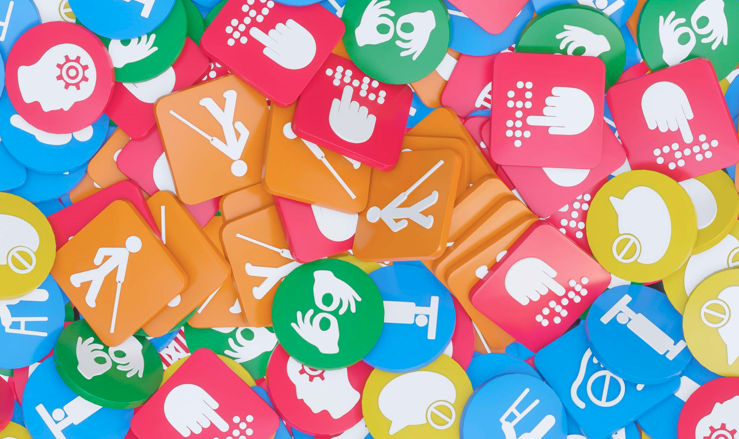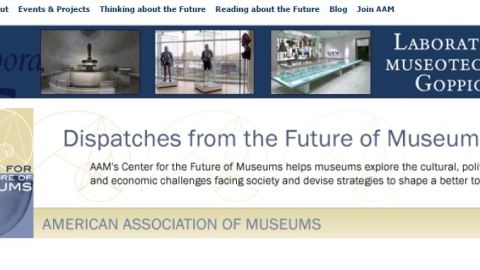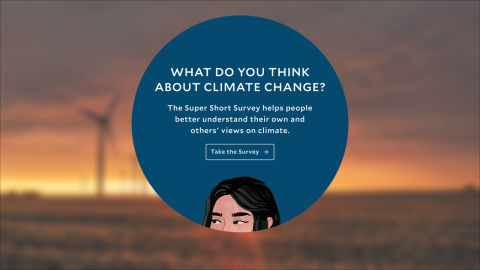
This article first appeared in the journal Exhibition (Fall 2025) Vol. 44 No. 2 and is reproduced with permission.
There are many ways to expand knowledge about accessibility and the disability community—from diving into disability history to co-designing an exhibit component with users while tackling the nuts and bolts of accessibility. The following list of references and resources is a compilation from a handful of professionals who work in museums and exhibition development. It is by no means complete or comprehensive. Instead, these citations offer potential entry points into this rich and diverse area of our work.
Hearing their Voices
First-person perspectives from the community are always a good starting point. In addition to these resources, memoirs from individuals with disabilities are abundant.
- About Us: Essays from the Disability Series from the New York Times, edited by Peter Catapano and Rosemarie Garland-Thomas
- Disability Visibility: First-Person Stories from the Twenty-First Century, edited by Alice Wong
Learning from the Community
Understanding disability history, how to be an ally, and the movements within the movements provides an invaluable foundation when thinking about what stories we pursue and tell, and how we present them to visitors who may or may not be familiar with them. In addition to history and context, resources marked with an asterisk (*) also offer practical approaches and advice.
- Crip Camp: A Disability Revolution, documentary, 2020
- A Disability History of the United States, Kim E. Nielsen
- Care Work: Dreaming Disability Justice, Leah Lakshmi Piepzna-Samarasinha*
- Demystifying Disability, Emily Ladau*
- Skin, Tooth, and Bone: The Basis of Movement Is Our People, Sins Invalid*
Accessibility and Museums
More and more books focused on accessibility within museums are being published. Written and edited by museum professionals, the following resources help us think about how we orient ourselves to accessibility and inclusion, and plan for, implement, evaluate, and expand accessibility within our institutions.
- An Accessible Past: Making Historic Sites Accessible, edited by Heather Pressman
- The Art of Access: A Practical Guide for Museum Accessibility, Heather Pressman and Danielle Schulz
- Evaluating Accessibility in Museums: A Practical Guide, Lauren Trainer
- Museum Accessibility by Design: A Systematic Approach to Organizational Change, Maria Chiara Ciaccheri
- The Museum Accessibility Spectrum: Re-Imagining Access and Inclusion, edited by Alison F. Eardley and Vanessa E. Jones
Inclusive and Universal Design
While ensuring accessibility to the public based on a legal framework is a critical starting point, compliance with laws, regulations, and accompanying specifications does not necessarily ensure inclusive, welcoming, or usable experiences. Applying universal and inclusive design further ensures success. The following resources provide more information about these design concepts, frameworks, and philosophies.
- Institute for Human Centered Design: General Inclusive Design Resources
- Inclusive Digital Interactives: Best Practices and Research, A Collaboration Between Access Smithsonian, Institute for Human Centered Design, and MuseWeb
- Universal Design: Creating Inclusive Environments, Edward Steinfeld and Jordana Maisel
Intersections Between Design and Disability
Design perspectives on the approach and relationship between design and disability are another portal into this work. These two books are examples.
- Design Meets Disability, Graham Pullin
- What Can a Body Do? How We Meet the Built World, Sara Hendren
Guidelines, Best Practices and Practical Resources
No list would be complete without practical, how-to resources for exhibition developers. There are many such guidelines and resources, and this list is by no means complete–particularly when it comes to the many components that must be considered in the course of developing an accessible exhibition. Rather, the resources compiled here have become go-to resources for many practitioners over the course of their careers. Use it as a starting point, then continue to build.
General
● The Kennedy Center: Leadership Exchange in Arts and Disability (LEAD) Research & Resources
Exhibitions, Media, and Design
- AccessAbility 2: A Practical Handbook on Accessible Graphic Design, RGD
- Content Creation: Create Accessible Digital Products, Section 508.gov
- Graphic Artists Guild: Disability Access Symbols
- “Language Matters: Plain Language Training Part One (2023)” with Liz Weintraub, hosted by the UC Davis MIND Institute
- Programmatic Accessibility Guidelines for National Park Service Media, Harpers Ferry Center, National Park Service
- Smithsonian Guidelines for Accessible Exhibition Design, Access Smithsonian
- WebAIM Contrast Checker
Plain Language and Style
- Disability Language Style Guide, National Center on Disability Journalism
- University Centers for Excellence in Developmental Disabilities: Plain Language Resources (the toolkit files are at the bottom of the page)
Self-Evaluations and Assessments
- Arts & Culture Accessibility Self-Assessment: A Project of Open Door Arts: Arts and Culture Accessibility Resource Center
- National Endowment for the Arts: Section 504 Self-Evaluation Workbook
Note: While this older resource does not include the most recent requirements, it provides a comprehensive review of all considerations.
Podcasts
Immersion into these topics isn’t just found in books. Social media, news articles, and podcasts are sources of information, engaging learning, and, in some cases, another way to connect with the community. Here are a few podcasts to get you started:
- The Accessible Stall with Kyle and Emily
- Down to the Struts: A Podcast About Disability and Design
- Talk Description to Me
- Tuesdays with Liz: Disability Policy for All
AAM’s Perspective on Accessibility
AAM supports accessibility within the important DEAI framework. To learn more about AAM’s focus on this work, go to:






